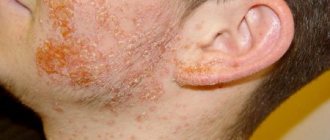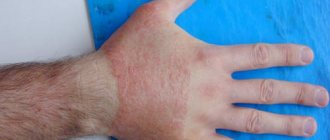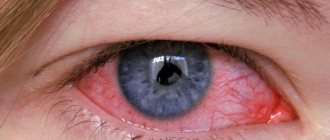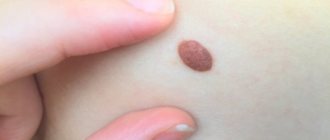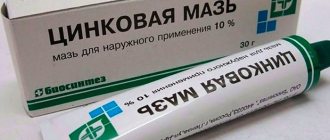Hypovitaminosis
It happens that a child does not have enough vitamins in his body. This condition is called hypovitaminosis. It can occur for various reasons. This condition needs correction.
It is worth remembering that hypovitaminosis is not a complete absence of vitamins, but a deficiency of certain groups. Therefore, this disease has fewer consequences and is cured faster.
Benefits of vitamin K for the body
1.Vitamin K for Heart Health
Vitamin K has been shown to help prevent artery calcification, one of the leading causes of heart attacks. It works by removing calcium from the arteries and preventing it from turning into hard, dangerous deposits.
A study published in Integrative Medicine: A Clinician's Journal indicates that vitamin K helps prevent hardening of the arteries. This is because of vitamin K's ability to lock calcium into the lining of arteries and other body tissues, where it can cause damage.
The above is especially important for vitamin K2. Vitamin K2 is a naturally occurring vitamin that is produced by intestinal bacteria. It can help optimize calcium utilization, preventing any potential negative health effects. This is due to increased calcium intake, which is common in industrialized countries.
Some research suggests that vitamin K is an important nutrient for reducing inflammation and protecting cells. Especially for those that line blood vessels, including both veins and arteries. Consuming adequate levels of vitamin K is important for maintaining healthy blood pressure. And also reduce the likelihood of cardiac arrest.
2.Vitamin K for bones
Vitamin K increases the amount of a specific protein needed to maintain calcium in the bones, reducing the risk of osteoporosis. Some studies on vitamin K have even found that consuming vitamin K can stop bone loss in people with osteoporosis.
The body needs vitamin K to use calcium to build bones. Osteocalcin helps remove calcium from the circulation and bind it to the bone matrix. This makes the skeleton stronger and less susceptible to fractures. However, osteocalcin requires vitamin K2 in order for it to be fully activated and properly bind calcium.
There is growing evidence that vitamin K can improve bone health and reduce the risk of fractures. This is especially true for postmenopausal women who are at risk of osteoporosis. According to research, men and women with the highest intake of vitamin K2 are 65% less likely to suffer a hip fracture. This is in contrast to those with low vitamin K2 intake.
These studies showed that vitamin K may not only increase bone mineral density in people with osteoporosis, but also reduce the incidence of fractures.
There is also strong evidence that vitamins K and vitamin D , a classic of bone metabolism, work together to improve bone density. There is growing evidence that vitamin K has a positive effect on calcium balance in the body. Calcium, in turn, is a key mineral in bone metabolism. Studies of male and female athletes have also shown that vitamin K helps maintain bone health. For people with injuries, consuming enough vitamin K foods can help prevent ankle sprains. And also heal broken bones.
3.Vitamin K helps with menstrual pain and bleeding.
Vitamin K may help reduce PMS cramps and other menstrual pain by regulating hormone function. Vitamin K is a blood clotting vitamin. Therefore, it can help with excessive bleeding during the menstrual cycle and relieve pain from PMS symptoms.
Excessive bleeding leads to increased cramping and pain during the menstrual cycle. Many studies show that just as vitamin K can help with PMS symptoms, the opposite is also true. A lack of vitamin K will only make these symptoms worse.
4.Vitamin K for cancer
Vitamin K has been shown to be a natural cancer fighter and is effective in reducing the risk of prostate and colon cancer. As well as the stomach, nose and oral cavity. One study found that high doses of vitamin K helped liver cancer patients stabilize and even improve liver function.
Another study found that increasing dietary intake of vitamin K was associated with a reduced risk of cardiovascular disease. As well as cancer or overall mortality in populations at high risk of cardiovascular disease.
5.Vitamin K for blood
Vitamin K thickens the blood and prevents bleeding or bruising. The process of blood clotting is very complex, as it requires at least 12 proteins to function. Four of these protein clotting factors require vitamin K for their activity. Thus, vitamin K for the blood is important. Since vitamin K helps with blood clotting, it plays an important role in helping bruises heal quickly and also in healing cuts.
Hemorrhagic disease of the newborn (known as HDN) is a condition in which the blood does not clot properly. It occurs in newborn babies due to a lack of vitamin K. One study found that it is necessary to give newborns an injection of vitamin K at birth to safely eradicate TTH. This practice has been proven to be harmless to newborns.
6.Vitamin K for the brain
Vitamin K plays a role in the functioning of the nervous system, participating in the metabolism of sphingolipids. Sphingolipids are a class of natural molecules that are widely present in the cell membranes of the brain. They are biologically potent molecules involved in a wide range of cellular actions. Sphingolipids are also known for their structural role in building and supporting the brain.
There is also growing evidence that vitamin K has anti-inflammatory activity. It may protect the brain from oxidative stress caused by free radical damage. Oxidative stress can damage cells. Vitamin K is also believed to be involved in the development of cancer, Alzheimer's and Parkinson's diseases, and heart failure.
7.Vitamin K for gums and teeth
A diet low in fat-soluble vitamins, including K, is associated with tooth decay and symptoms associated with gum disease. To combat tooth decay and gum disease, you need to increase the amount of fat-soluble vitamins. Fat-soluble vitamins play an important role in the mineralization of bones and teeth.
A healthy diet rich in vitamins and minerals helps kill harmful bacteria that live in the mouth and produce tooth-damaging acids. Vitamin K is one nutrient that works with other minerals and vitamins to kill bacteria. These bacteria destroy tooth enamel, leading to tooth decay. Vitamin K also provides teeth with essential minerals to keep them strong.
Risk group
Who is susceptible to this disease? Teenagers who are going through puberty, small children, people who abuse alcohol and cigarettes. Also at risk are pregnant and lactating women, as well as girls who are on strict diets. In addition, the following are susceptible to vitamin deficiency:
- people who have suffered serious illnesses or surgeries;
- vegetarians;
- people with excessive stress (either mental or physical).
Hypovitaminosis can also be caused by stress or taking certain medications that destroy beneficial elements, preventing them from being absorbed by the body.
When a baby is not fed breast milk, but goat or cow milk, or is given the wrong formula, he may develop a similar illness. Vitamin deficiency can also appear due to improper complementary feeding or its introduction too late.
Daily values of vitamin A for children and adults
| Age and individual categories | Retinol norm, mcg (IU) |
| from birth to 1 year | 400 mcg (1250 IU) |
| 1–3 years | 450 mcg (1340 IU) |
| 3–6 years | 500 mcg (1670 IU) |
| 6–10 years | 700 mcg (2335 IU) |
| boys 10–14 years old and adult men | 1000 mcg (3333 IU) |
| girls 10–14 years old and adult women | 800 mcg (2667 IU) |
| pregnant women | 1200 mcg (3900 IU) |
| women during lactation | 1400 mcg (4620 IU) |
Causes of illness in children
Why does vitamin deficiency occur in a child? There can be many reasons. The disease occurs due to genetic and environmental factors, unfavorable factors, and hidden chronic diseases.
Also, vitamin deficiency in a child can occur due to problems with the digestive system, as a result of which vitamins are not absorbed.
Diseases of the thyroid gland can lead to a similar illness in a child. Vitamin deficiency can be caused by parasites in the body.
Decreased immunity and metabolic disorders can also lead to the development of the disease.
If a child is fed food that contains few vitamins, then the appearance of this disease is possible. Hypovitaminosis may also occur due to a monotonous diet that lacks vegetables, fruits and certain categories of foods.
If a child is treated with medications, they can destroy beneficial elements or prevent them from being absorbed in the gastrointestinal tract. As a result, the baby will develop a similar disease
Causes of vitamin deficiency
Now that we distinguish hypovitaminosis, which is widespread among children and adults, from vitamin deficiency, which is less common, it becomes clear that its main cause is advanced hypovitaminosis. If we talk about why the child initially developed vitamin deficiency, then the list of reasons will be substantial.
It all depends on what vitamin deficiency the baby is experiencing, although one cannot help but name common universal reasons:
- eating disorders, lack of certain foods, vegetarianism;
- frequent consumption of carbohydrates and grains that have undergone grinding;
- improper preparation of food, storage of products in which substances valuable to the child’s body are destroyed even before they enter the body (some foods cannot be frozen, and some cannot be boiled);
- stress, heavy physical activity, illness, living in cold regions increase the need for vitamins by about 50-60%, and if this is not taken into account, a deficiency will certainly appear;
- impaired absorption of vitamins as a result of gastrointestinal diseases, as well as while taking antibacterial drugs.
Each type of vitamin deficiency has its own specific causes.
- Lack of vitamin A - the child has little protein and carotene in his diet, he consumes little animal fat, he is physically exhausted or has been in a state of extreme emotional exhaustion for a long time. A lack of this vitamin can be a consequence of past infections, and can also accompany enteritis and colitis in chronic form, pathologies of the liver and thyroid gland.
- Vitamin C deficiency - the child eats little fresh greens, vegetables, fruits, food for him is carefully and for a long time subjected to heat treatment. This form of vitamin deficiency develops with the abuse of baked goods, bread, as well as with significant mental and intellectual stress.
- Lack of vitamin B1 - there is no wholemeal flour in the diet, the child eats only polished cereals. This form of hypovitaminosis occurs among northern peoples due to eating raw fish for a long time, as well as among all other peoples if the child is given too much protein food. Such deficiency often accompanies thyroid disease and diabetes.
- B2 deficiency – dairy products and protein are absent or present in the child’s diet, but in very small quantities. Often develops in diseases of the pancreas, intestines, and liver.
- B3 deficiency - the child is exposed to the sun too often and for a long time, eats a lot of corn, and not enough protein. This form of hypovitaminosis is also typical for children taking drugs for the treatment of tuberculosis.
- B6 deficiency is a characteristic condition for children with intestinal and stomach diseases.
- Lack of B9 - develops against the background of long-term use of antibiotics, after intestinal operations, as well as in children who eat food that has been exposed to high temperatures for too long
- Lack of B12 - vegan child, vegetarian. Often this form of deficiency occurs with chronic infection with worms and chronic lesions of the gastrointestinal tract.
- D deficiency – lack of sunlight, rare exposure to fresh air, low consumption of animal fat, lack of calcium salts, phosphorus.
- K deficiency – low amount of fat, eating low-fat foods, blood and intestinal diseases, long-term use of antibacterial agents and anticoagulants.
The essence of therapy is to introduce the required substance into the body. Better with food, sometimes topically, in the form of an ointment, sometimes in tablets or injections. The food method is preferable, because it is in the intestines that vitamins are absorbed. The medications are prescribed by the doctor. Self-medication is unacceptable.
Avitaminosis. Symptoms. What appears on the skin? How does a child's behavior change?
If there is a suspicion of such a condition, then the child usually experiences weakness and difficulty waking up in the morning. At the same time, he is lethargic and sleepy throughout the day. Also signs of vitamin deficiency are:
- tearfulness;
- absent-mindedness;
- decreased appetite;
- irritability;
- depression;
- frequent pain;
- insomnia and other sleep problems;
- reduced immunity.
Also, if a child has vitamin deficiency, he cannot concentrate on anything for a long time, and his performance at school decreases.
How else does vitamin deficiency manifest itself? Symptoms:
- peeling appears on the skin, it becomes very dry and thin;
- cracks appear in the corners of the mouth;
- a change in taste is observed, unusual addictions appear (for example, a child begins to consume coal, chalk, clay, sand, etc.).
In addition, language changes are possible. There are other signs of vitamin deficiency in children. Pink pimples may appear on the skin. The child also has problems with the respiratory system and cardiovascular system.
In severe cases of the disease, stooping and deformation of the skeletal bones, and bending of the limbs may occur. Frequent fractures, cramps and involuntary muscle contractions are also possible.
General symptoms
How does vitamin deficiency manifest itself and is it possible to independently find out about its development? Certain clinical manifestations indicate a deficiency of useful components in the body.
These include:
- fatigue;
- general weakness;
- appetite disorders;
- change in skin tone;
- sweaty palms;
- sleep-wake disturbances.
The main sign of vitamin deficiency in children is increased irritability. The child cannot sit still, he does not like anything. Tearfulness and hysteria increase. The baby is trying to perform his usual actions, but he doesn’t have enough strength to do it.
Signs of deficiency by vitamin group
Let's look at the symptoms by which you can determine which element your child is missing:
1. Vitamin E deficiency. Typically, a deficiency of this element is observed in infants who are on artificial nutrition. Vitamin E deficiency can only be detected in a laboratory. Since the signs are not expressed.
2. Vitamin A deficiency. Signs: dry skin, pustules and rashes, dry mucous membranes.
3. Vitamin B1 deficiency. The baby has serious disorders in the functioning of the nervous and cardiovascular systems. The child experiences convulsions and involuntary muscle contractions. The amount of urine also decreases. There is nausea and vomiting. There is a decrease in appetite.
4. Vitamin B6 deficiency. The child is weak, lethargic, has convulsions, stomatitis in the mouth, and dermatitis on the skin. At the same time, the tongue is bright red.
5. Vitamin B2 deficiency. Signs: a sharp decrease in body weight, insufficient growth, spots on the face and body, peeling. The child's behavior is sluggish, inhibited, and there is a lack of coordination of movement. Can be excitable and irritable.
6. Vitamin C deficiency. Scurvy occurs, symptoms of the disease are present (tooth decay, bleeding gums). Swelling also appears, and wounds take a long time to heal. The child is whiny and irritable.
7. Vitamin D deficiency. Usually appears in children under one year of age. Rickets occurs. Signs: very thin limbs, bone deformation, severe protrusion of the abdomen.
8. Vitamin K deficiency. Frequent bleeding and bleeding gums are observed. The child develops bruises on his body. Hemorrhages can occur in internal organs and in the brain.
9. Vitamin PP deficiency. Signs: weakness, fatigue, diarrhea. Crusts and blisters may appear on the skin. Also, the child’s mouth and tongue become inflamed, and the skin becomes thick and folded.
10. Vitamin B12 deficiency. Weakness, decreased appetite and shortness of breath are signs of B12 deficiency. Hyperpigmentation, muscle atrophy, and mental disorders may also occur. The tongue turns bright red.
Symptoms
Lack of vitamins of different groups manifests itself in different symptoms. Most often, doctors are able to recognize a deficiency:
- Retinol or fat-soluble vitamin A. This substance has a positive effect on the structure of the skin and mucous membranes. It is this that ensures the correct flow of metabolic processes, in particular in the visual organs. Vitamin A is a key component of visual pigment and is responsible for the quality of twilight vision. With its deficiency, it is possible to increase dryness of the skin up to the appearance of signs of cracks on the feet and fingers. Vitamin deficiency of this type begins with the appearance of gray formations on the elbows, abdomen, knees, etc., accompanied by a feeling of itching. Hair loss, inflammation of the eyes and their membranes are often observed.
- Thiamine or vitamin B1. The first signs are that the child is lagging behind his peers in growth, low appetite, poor memory, sleep problems, and fatigue.
- Riboflavin or vitamin B2. In the presence of this type of vitamin deficiency, the child’s eyeballs are covered with visible vessels. There are ulcers and inflammations in the oral cavity. Stomatitis, swelling, and pink rashes on the face and body often appear.
- Calciferol or vitamin D. Since this vitamin directly affects the formation of bone tissue, its deficiency is accompanied by caries, soft bones, and children’s susceptibility to injury. Possible convulsions, rickets, constant weakness.
- Ascorbic acid or vitamin C. Most often, pathology is observed with a monotonous diet with a predominance of carbohydrates in the diet. The child is weakened, gets tired quickly, and eats poorly. The gums bleed and are constantly inflamed, and bruises easily appear.
Diagnosis of vitamin deficiency in a child
As a rule, the symptoms of vitamin deficiency make it possible to determine the pathology without additional tests. In order to diagnose vitamin deficiency, the doctor interviews the minor patient and conducts a visual examination. Particular attention is paid to the condition of the skin and mucous membranes. The doctor clarifies dietary habits and features of a regular diet, as well as food intake.
Specific forms of vitamin deficiency are identified as part of the diagnosis using laboratory tests and instrumental diagnostic methods. For example, if there is a suspicion of vitamin A deficiency, the doctor performs a visual acuity test, in particular night vision. To identify a lack of ascorbic acid, a vacuum test for capillary resistance parameters is used. So, after the formation of a vacuum on a separate area of the skin, the doctor counts the number of bruises that have occurred. To determine the quantitative content of vitamins, tests of biological fluids - blood and / or urine - are prescribed.
Vitamin deficiency in children: treatment
Doctors do not always prescribe medication. Sometimes it is enough to adjust the child’s diet, introduce supplements, vitamin dishes, and the disease recedes.
But sometimes the condition of a small patient is serious, then another therapy is required. Often in such cases, the child is hospitalized, vitamin preparations are administered using droppers and injections.
A very important condition for a speedy recovery is a proper balanced diet.
If there is a suspicion of vitamin deficiency in a child, then you should consult a doctor. Only a doctor, after examining the baby, will be able to make an accurate diagnosis and prescribe appropriate treatment.
Preventive measures. What can parents do?
How to prevent spring vitamin deficiency?
1. It is necessary to normalize the child’s nutrition. Introduce more fresh fruits, dairy products, vegetables, fish, dried fruits and meat into his diet.
2. You should walk in the fresh air more often.
3. It is necessary to give vitamins; by the way, for vitamin deficiency in children, they are also prescribed.
4. It is necessary to limit the consumption of unhealthy foods (for example, hamburgers, pizza, soda).
Prevention measures
To minimize the risks of reducing B vitamin substances, you need to try to adhere to the rules:
- Carefully monitor your diet; If you need to increase your consumption of foods containing B vitamins.
- Rest more and try not to experience excessive stress (mental, physical).
- Give up habits that are harmful to your health as much as possible.
- If you feel unwell, consult a doctor immediately.
Considered important! Listen to your body and its needs. Avoid unnecessary strenuous exercise.
How to choose vitamins?
Now there is a fairly large selection of vitamins. Therefore, mothers do not know what to choose for their baby. Now we will give advice on choosing. The following drugs are suitable for a child under two years of age: “Multi-Tabs” (children), “Pikovit”, “Kinder Biovital”, “Pangexavit”, “Vetoron”, “Multi-Tabs Baby”.
What vitamins should I give for children aged 2 to 5? For example, ". Also suitable for a child are “Unicap U” and “Alphabet Kindergarten”.
We have already found out which vitamins are suitable for children from 2 to 5 years old. And if the child is older, then what complexes should be used? The following are suitable for the prevention and treatment of this disease:
- "Multi Tabs Classic";
- "Oligogal";
- "Vitrum";
- "Vitrum Plus";
- "Centrum" (children);
- "Alphabet";
- "Triovit."
The use of specialized vitamin complexes
In advanced cases, it is not possible to restore the deficiency of useful components through food and additional physical activity. If severe symptoms of vitamin deficiency appear, it is advisable to switch to taking specialized vitamin complexes. On the modern market, Alphabet, Pikovit and Vitrum are considered the most affordable and highly effective.
Alphabet
Complexes from this manufacturer help strengthen the body and are the best preventative against vitamin deficiency:
- Our Baby . Available in sachets in powder form as a dietary supplement during meals for children 1-3 years old. The package contains three types of sachet packages (1 - vitamins D, B12, pantothenic acid, calcium; 2 - B2, , E, , C, beta-carotene, magnesium, zinc, iodine; 3 - B1, C, folic acid, beta-carotene, iron).
- Kindergarten . This is a complex of vitamins (B1, B2, B12, B6, C, D, K, E) and minerals (magnesium, zinc, manganese, iodine, calcium and iron), which is intended to replenish the deficiency of useful components in the body in the form of chewable tablets with fruity taste. Contains all the substances necessary for a child aged 3-7 years. The tablets are also divided into 3 types, differing in composition.
- Schoolboy . The package contains 60 tablets of three different types with different tastes, which include various vitamins and minerals (cherry - C, B1, A, folic acid, iron, copper; orange - C, A, E, PP, B2, B6, magnesium , selenium, zinc, iodine; banana - B5, B12, folic acid, D3, calcium). Designed for children aged 7 to 14 years to help balance nutritional deficiencies.
Pikovit
In the pharmacy you can find a universal remedy with the same name, suitable for children of different age groups. Contains a full complex of vitamins (A, group B, C) and is approved for use from the age of two. Helps compensate for the deficiency of useful components and prevent the development of vitamin deficiency. Improves overall well-being and energizes.
There are also vitamins Pikovit 1+ (in syrup form), 3+, 4+, 7+.
Vitrum
Expanded complexes of vitamins (A, B1, B2, B3, B5, B6, B9, B12, E and C) and microelements (phosphorus, magnesium, iron, calcium, copper, chromium, iodine). A distinctive feature of the drugs is the form of tablets, in the form of animals. A creative approach to making medicine makes life easier for millions of mothers who want to improve the health of their own child. Vitrum Baby is intended for children from 2 to 5 years old, Kids - from 4 to 7, Junior - from 7 to 14.
Attention: only a specialist can select the optimal vitamin complex based on the general condition of the child.
We treat the disease with natural vitamins!
Now we’ll tell you what should be included in a child’s diet if there is a shortage of one or another element. If there is not enough vitamin B1, then add peas, wholemeal bread, bran (rice, wheat, oatmeal).
A child who is deficient in vitamin A should eat the following foods: sorrel, apricots, cod, carrots, peaches, fish oil, milk, liver, red peppers, spinach, butter, gooseberries, lettuce, egg yolk, black currants, parsley .
If there is a lack of vitamin B2, it is useful to eat cereals, peas, offal (stomachs, liver), eggs, and milk.
If a child has a vitamin D deficiency, then fish oil and egg yolk should be added to the diet. It is also beneficial to walk on sunny days.
If there is a lack of vitamin E, you should add meat, cereal sprouts, milk, green parts of plants, vegetable oil, fat and eggs to your diet.
In order to saturate the body with vitamin K, you should eat cauliflower, spinach, vegetable oils, rose hips, and pork liver.
If you are deficient in vitamin PP, add buckwheat, liver, kidneys, fruits, fish, milk, vegetables, and meat to your diet.
Children who are deficient in vitamin B6 should eat bananas, legumes, cereals, fish, meat, liver and kidneys.
If you have a B12 deficiency, you need to add organ meats (kidneys and liver are especially useful) and soy to your diet.
If there is not enough vitamin C, then you need to add citrus fruits, peppers, rowan berries, strawberries, black currants, potatoes, cabbage, strawberries, spinach, and horseradish.
Sources of Vitamin A and Beta Carotene
The main source of vitamin A precursor is food of plant origin. Beta-carotene is a dark orange pigment, so all foods high in it have characteristic colors: yellow, bright red, dark green.
The foods richest in beta-carotene are presented in the table.
| Products | Beta-carotene, mg/100 g of product |
| carrot | 9 |
| sorrel | 7 |
| parsley | 5,7 |
| watercress | 5,6 |
| rose hip | 5 |
| spinach | 4,5 |
| celery | 4,5 |
| wild garlic | 4,2 |
| mango | 2,9 |
| garlic | 2,4 |
| green onions | 2 |
| sweet red pepper | 2 |
| melon | 2 |
| salad | 1,8 |
| apricots | 1,6 |
| broccoli | 1,5 |
| pumpkin | 1,5 |
| tomatoes | 1,2 |
| chokeberry | 1,2 |
| dill | 1 |
Retinol is a fat-soluble vitamin, so it comes from animal foods. During culinary processing (cooking, canning, scalding with boiling water), a small part of its beneficial properties is lost. Thus, 70–85% of vitamin A is absorbed.
The foods richest in retinol are presented in the table.
| Products | Vitamin A, mg/100 g of product |
| fish fat | 19 |
| chicken liver | 12 |
| beef liver | 8,2 |
| Cod liver | 4,4 |
| lamb liver | 3,6 |
| pork liver | 3,4 |
| Beluga caviar (grained) | 1,0 |
| acne | 0,9 |
| quail eggs | 0,5 |
| unsalted butter | 0,5 |
| chum salmon caviar (grainy) | 0,45 |
| chicken eggs | 0,35 |
| cheese | 0,26 |
| cream 35% fat | 0,25 |
| sour cream 30% fat | 0,23 |
| beef heart | 0,23 |
| beef kidneys | 0,23 |
| processed cheese | 0,15 |
| feta cheese | 0,12 |
| fat cottage cheese | 0,10 |
Retinol is better absorbed in the presence of vitamin E, a significant amount of which is contained in vegetable oil.






